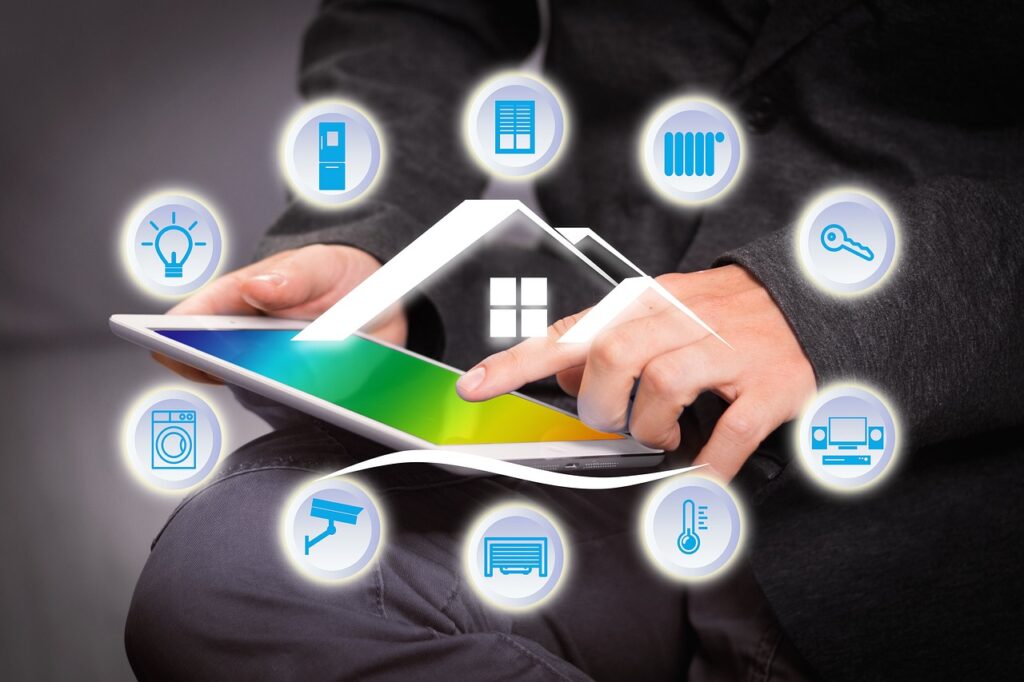How to Get Started with Home Automation: Step-by-Step Guide for Beginners
Home automation is a growing trend that transforms our homes into smart, efficient, and comfortable spaces. If you’re interested in turning your home into a smart home but don’t know where to start, this article will guide you step by step so you can get into home automation from scratch.
1. Understanding What Home Automation Is
Before you start installing devices, it’s crucial to understand what home automation is. Home automation refers to a set of technologies that allow you to automate and remotely control various aspects of your home, such as lighting, security, climate control, and appliances. These systems can be managed through a smartphone, tablet, or voice commands, making daily life easier and improving the energy efficiency of your home.
2. Evaluate Your Needs and Goals
Every home and person has different needs. Before investing in smart devices, take a moment to think about which areas of your home you’d like to automate. Do you want to improve security? Optimize energy consumption? Or simply make your life more comfortable with voice control?
Common goals include:
- Security: Cameras, alarms, and smart locks that you can control from anywhere.
- Energy Saving: Smart thermostats, bulbs, and plugs that let you monitor and reduce energy use.
- Comfort: Lighting and climate systems that automatically adjust to your preferences.
3. Choose a Central Automation Platform
The next step is selecting a central platform that acts as the “brain” of your smart home. Popular platforms include:
- Google Home: Compatible with a wide range of devices, allowing control via voice commands through Google Assistant.
- Amazon Alexa: Integrates with numerous smart devices and offers a wide variety of skills to customize the experience.
- Apple HomeKit: Ideal for Apple users, offering a secure and user-friendly ecosystem.
- Samsung SmartThings: Compatible with a vast range of devices and brands, offering great flexibility.
Choosing a central platform is crucial because it allows you to unify the control of all your devices in a single app, simplifying management.
4. Start with the Basics
Once you’ve chosen your central platform, it’s recommended to start with basic devices and gradually expand your home automation system. Here are some suggestions to begin with:
- Smart Bulbs: Easy to install and set up. They allow you to adjust your home’s lighting from your smartphone or via voice commands.
- Smart Plugs: Perfect for controlling any plug-in device. You can schedule timers or control them remotely.
- Smart Thermostats: Help save energy by adjusting your home’s temperature based on your habits and presence.
5. Integrate Security Devices
Once you’re comfortable with the basic devices, you can start integrating security elements into your smart home. Some options include:
- Security Cameras: Allow you to monitor your home in real-time from your smartphone.
- Smart Locks: Offer remote access to your home and can be programmed to unlock automatically when they detect your smartphone nearby.
- Motion and Door Sensors: Alert you if there’s suspicious activity in your home when you’re not around.
These devices not only enhance security but also add an extra layer of control and automation.
6. Automate Daily Tasks
With most basic devices up and running, it’s time to take advantage of the automation capabilities that home automation offers. Automations let you set rules and scenarios that trigger automatically. For example:
- Turn on lights at sunset: Set your lights to turn on automatically at dusk.
- Adjust temperature when you leave home: The thermostat can automatically lower the temperature when it detects no one is home.
- Morning routines: Schedule a series of actions, like turning on the lights, playing music, and brewing coffee when you wake up.
7. Consider Integration with More Advanced Systems
Once your basic home automation system is in place, you can start exploring more advanced options, such as:
- Virtual Assistants: Integrate a virtual assistant like Alexa or Google Assistant to control everything with your voice.
- Voice Control and Custom Scenes: Set up scenes that activate with a single command, like “Movie Night,” which lowers the blinds, adjusts the lighting, and turns on the TV.
- Advanced Sensors and Automation Systems: From humidity sensors that trigger a dehumidifier to automated irrigation systems for your garden.
8. Think About Security and Privacy
With so many connected devices, security and privacy should be a priority. Be sure to:
- Keep devices updated: Install updates regularly to protect against vulnerabilities.
- Set strong passwords: Use strong passwords and, if possible, enable two-factor authentication.
- Review privacy policies: Make sure you understand what data your devices collect and how it’s used.
9. Continuous Maintenance and Expansion
Home automation is a constantly evolving field. New devices and technologies emerge regularly, allowing you to keep improving and expanding your system. Stay informed about the latest developments and consider adding new features to your smart home.
Additionally, regular maintenance is essential to ensure everything works properly. Periodically check your devices, update software, and adjust automations as your needs change.
10. Enjoy Your Smart Home
Finally, the key is to enjoy the conveniences that home automation offers. A well-configured smart home not only improves your quality of life but also gives you greater control and efficiency in your daily routine.
Portada – Imagen de Gerd Altmann en Pixabay

